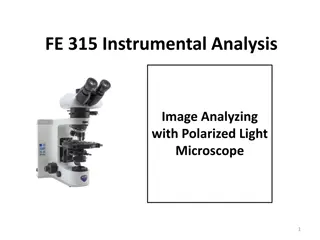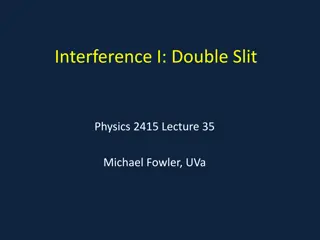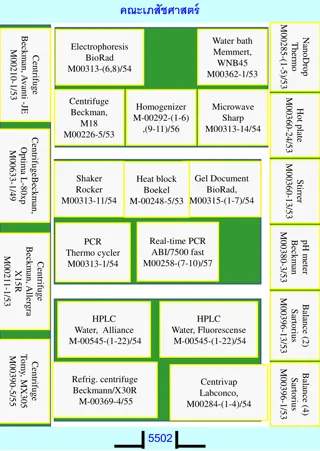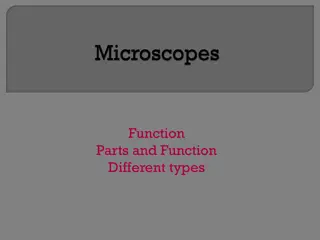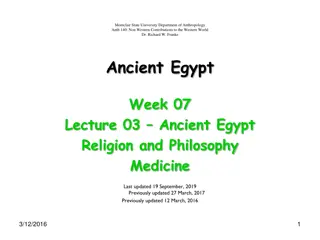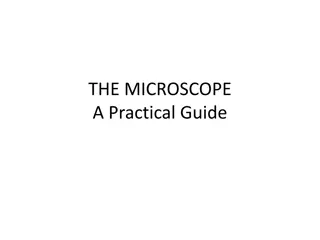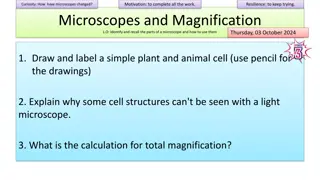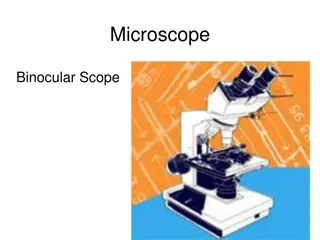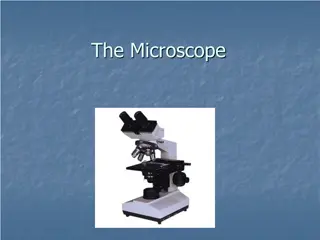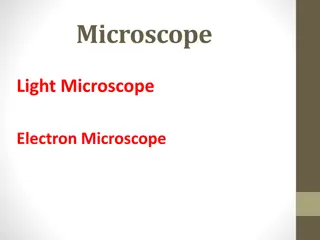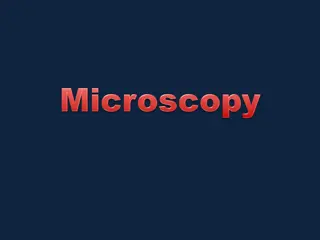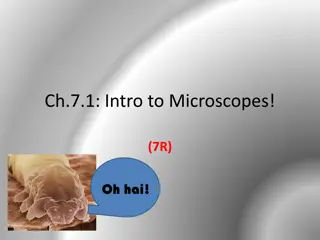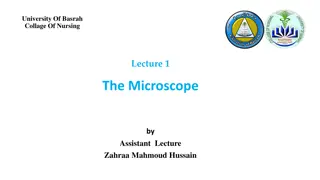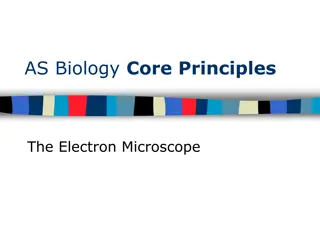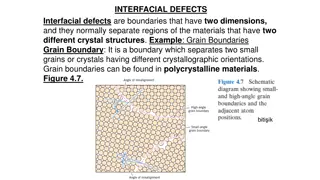The Fascinating World of Microscopes: From Ancient Origins to Modern Mechanisms
Delve into the intriguing history of microscopes, from ancient experimentation to the innovative creations of individuals like Zacharias Janssen, Anthony van Leeuwenhoek, and Robert Hooke. Explore how these optical instruments work, utilizing convex lenses to bend and focus light for magnification. Discover the essential parts of a microscope and how they come together to enhance our ability to observe the microscopic world.
Download Presentation

Please find below an Image/Link to download the presentation.
The content on the website is provided AS IS for your information and personal use only. It may not be sold, licensed, or shared on other websites without obtaining consent from the author.If you encounter any issues during the download, it is possible that the publisher has removed the file from their server.
You are allowed to download the files provided on this website for personal or commercial use, subject to the condition that they are used lawfully. All files are the property of their respective owners.
The content on the website is provided AS IS for your information and personal use only. It may not be sold, licensed, or shared on other websites without obtaining consent from the author.
E N D
Presentation Transcript
The Microscope Mr. Ryan 6thGrade
The History Many people experimented with making microscopes Was the microscope originally made by accident? (Most people were creating telescopes) The first microscope was 6 feet long!!! The Greeks & Romans used lenses to magnify objects over 1000 years ago.
The History Hans and Zacharias Janssen of Holland in the 1590 s created the first compound microscope Anthony van Leeuwenhoek and Robert Hooke made improvements by working on the lenses Robert Hooke 1635-1703 Anthony van Leeuwenhoek 1632-1723 Hooke Microscope
The History The First Microscope Zacharias Jansen 1588-1631
How a Microscope Works Convex Lenses are curved glass used to make microscopes (and glasses etc.) Convex Lenses bend light and focus it in one spot.
How a Microscope Works Ocular Lens (Magnifies Image) Objective Lens (Gathers Light, Magnifies And Focuses Image Inside Body Tube) Body Tube (Image Focuses) Bending Light: The objective (bottom) convex lens magnifies and focuses (bends) the image inside the body tube and the ocular convex (top) lens of a microscope magnifies it (again).
Ocular Lens Body Tube Nose Piece Arm Objective Lenses Stage Stage Clips Coarse Adj. Diaphragm Fine Adjustment Light Source Base Skip to Magnification Section
Body Tube The body tube holds the objective lenses and the ocular lens at the proper distance Diagram
Nose Piece The Nose Piece holds the objective lenses and can be turned to increase the magnification Diagram
Objective Lenses The Objective Lenses increase magnification (usually from 10x to 40x) Diagram
Stage Clips These 2 clips hold the slide/specimen in place on the stage. Diagram
Diaphragm The Diaphragm controls the amount of light on the slide/specimen Turn to let more light in or to make dimmer. Diagram
Light Source Projects light upwards through the diaphragm, the specimen and the lenses Some have lights, others have mirrors where you must move the mirror to reflect light Diagram
Ocular Lens/Eyepiece Magnifies the specimen image Diagram
Arm Used to support the microscope when carried. Holds the body tube, nose piece and objective lenses Diagram
Stage Supports the slide/specimen Diagram
Coarse Adjustment Knob Moves the stage up and down (quickly) for focusing your image Diagram
Fine Adjustment Knob This knob moves the stage SLIGHTLY to sharpen the image Diagram
Base Supports the microscope Diagram
Magnification To determine your magnification you just multiply the ocular lens by the objective lens Ocular 10x Objective 40x:10 x 40 = 400 So the object is 400 times larger Objective Lens have their magnification written on them. Ocular lenses usually magnifies by 10x
Caring for a Microscope Clean only with a soft cloth/tissue Make sure it s on a flat surface Don t bang it Carry it with 2 HANDS one on the arm and the other on the base
Using a Microscope Start on the lowest magnification Don t use the coarse adjustment knob on high magnification you ll break the slide!!! Place slide on stage and lock clips Adjust light source (if it s a mirror don t stand in front of it!) Use fine adjustment to focus
References http://www.cerebromente.org.br/n17/history/neurons1_i.htm Google Images http://science.howstuffworks.com/light-microscope1.htm
This powerpoint was kindly donated to www.worldofteaching.com http://www.worldofteaching.com is home to over a thousand powerpoints submitted by teachers. This is a completely free site and requires no registration. Please visit and I hope it will help in your teaching.


